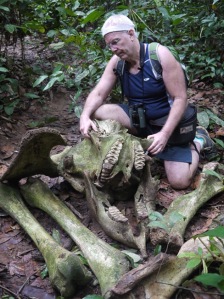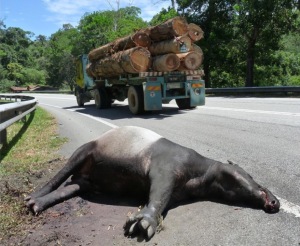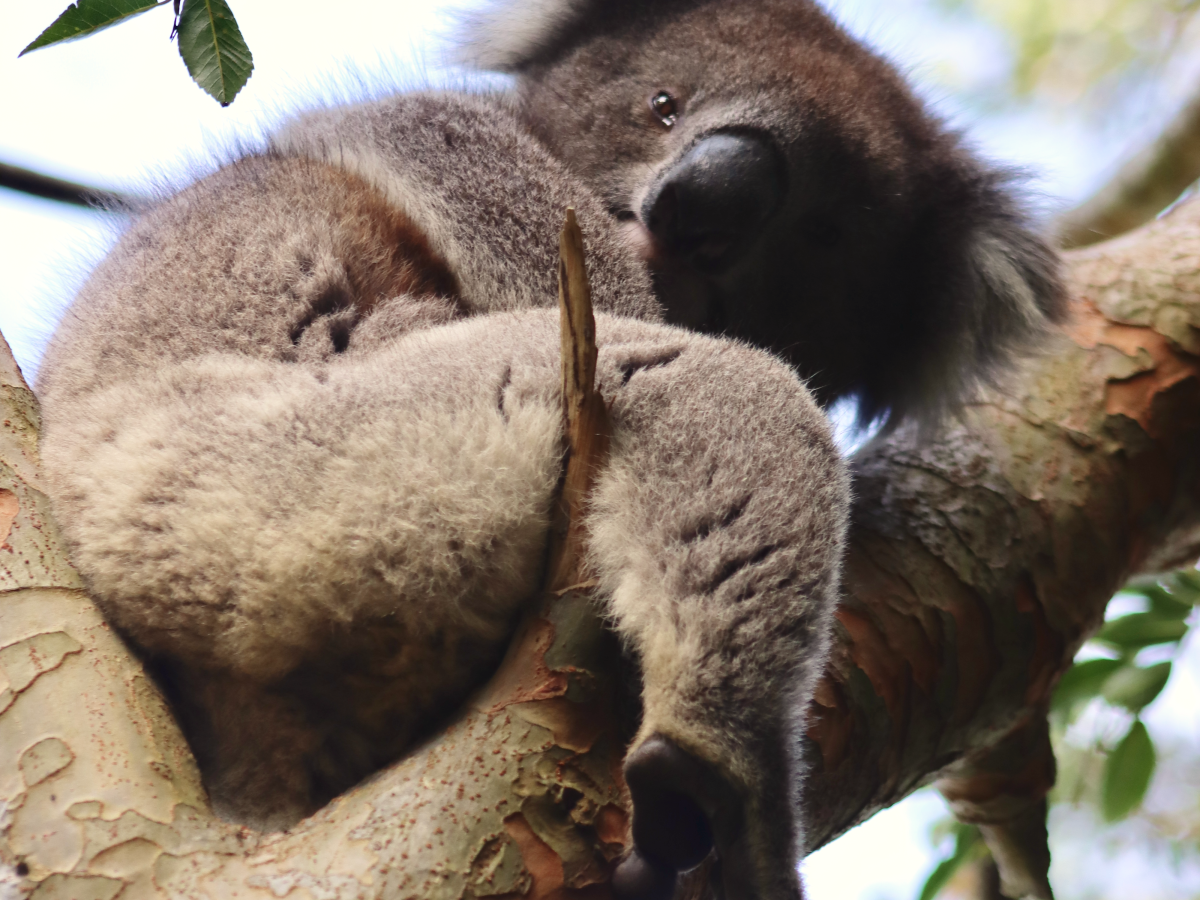 What do you say to a man whose list of conservation awards reads like a Star Wars film intro, who has introduced terms like the ‘hyperdynamism hypothesis’ to the field of ecology, and whose organisation reaches over one million people each week with updates of the scientific kind?
What do you say to a man whose list of conservation awards reads like a Star Wars film intro, who has introduced terms like the ‘hyperdynamism hypothesis’ to the field of ecology, and whose organisation reaches over one million people each week with updates of the scientific kind?
Interview with Bill Laurance by Joel Howland (originally published in Conjour)
—
Well, I started by asking what it is that leads him to love the natural world to the extent he does. His answer was disarmingly simple.
“I grew up in the country, on an Oregon cattle ranch, and I think my love of nature just evolved naturally from that. When I was a young kid my dad and I did some fishing and ‘rock-hounding’— searching for rare stones and fossils. As an adolescent and teen I loved heading off into a forest or wilderness, rifle in hand – back in those days you could do that – to see whatever I could find. I watched red foxes hunting, eagles mating, and even heard a mountain lion scream. I got to be a pretty good duck and game-bird hunter.”
He’s quick to point out, however, he realised his taste for guns was not so developed as his love of nature.
“I gave up my rifles for a camera, and enjoyed that even more. I really got into photography for a while. Nature has always just calmed and fascinated me —I guess that’s partly why I became a conservationist.”
Who is Bill Laurance?
William F. Laurance is one of the leading ecology and conservation scientists globally, publishing dozens of papers in journals like Nature and Science, and rewriting the way scientists in the field research the complex interactions between flora and fauna — particularly in rainforests like the Amazon.
He is a Distinguished Research Professor at James Cook University in Australia, a Fellow of the Australian Academy of Science and the American Association for the Advancement of Science, and has received an Australian Laureate Fellowship from the Australian Research Council.
All this for a man from western USA who dreamed of running a zoo. Instead, he has travelled a path of intricate and game-changing research, trailblazing awareness campaigns and inspirational writings that have driven the way many see the environment over the past few decades.
Despite this profile, Laurance gave some time to tell Conjour about his life, his passion and his aims. I asked him what — considering his impressive CV — the future holds.
His response seems a real insight to the man.
“I’ve given up trying to plan for the future, at least in the sense of having a specific scheme. Too often it doesn’t work out. But I have two kids and so I’m investing in the future—I have to do that. I’ve always respected people who want to make the world better, in one way or another—not just get ahead themselves.
“So,” he continues, “I’ll keep pushing a conservation perspective for as long as I can. Truth be said, I enjoy it, most of the time. My wife gets seriously upset with me for overworking but it’s not really work, is it, when the stakes are so high?”
Laurance has been referenced in published papers almost 50,000 times. That’s not particularly surprising considering his progressive work in the research field, where he has become well-known for the creation of a number of critical phrases.
Naming Biomass Collapse
In 1997 Science published a paper by Laurance and colleagues titled ‘Biomass collapse in Amazonian forest fragments’. It detailed the inability of separated sections of rainforest to regenerate lost biomass that directly results from the fragmentation. This is because of a changed climate condition and surrounding wind turbulence.
That paper didn’t drift aimlessly to a back row of shelves.
“I think that study opened my eyes to the fact that habitat fragmentation isn’t just affecting biodiversity,” explains Laurance, “but is having much broader impacts on entire ecosystems — and via such changes, is altering forest carbon storage and increasing climatic change.
“Since then I’ve realised that fragmentation has even more insidious impacts — affecting everything from atmospheric circulations to local rainfall. I know that ‘to a guy with a hammer, every problem looks like a nail,’ but in my mind fragmentation is a complete game-changer for ecosystems — it affects nearly everything.”
Laurance’s focus on fragmentation – or, as I’ve decided to call it, Fragmenfocus – led him down a fruitful path of ‘apple on the head’ discoveries. One critical development in his, and indeed everyone’s, understanding of the wider impact of fragmentation came with his 2002 paper ‘Hyperdynamism in fragmented habitats’. This looked at how ecological processes are affected and why species respond in the ways they do.
“Imagine taking some really strong amphetamines,” says Laurance, when I asked him to explain the term for us, “and then seeing what it does to your physiology and health. That’s more or less what the hyperdynamism hypothesis postulates for fragmented ecosystems. For lots of reasons, their dynamics go wacky and generally speed way up.
“For example, the dynamics of habitat fragments can be accelerated by recurring disturbances from fires and windstorms originating outside the fragments.
Invasive or generalist species can explode in numbers in the modified lands surrounding fragments and then invade them, knocking them off-kilter. Trees near fragments die much faster than normal—due to microclimatic stresses and wind shear. And small fragments have small, vulnerable populations of native plants and animals that are inherently vulnerable to random fluctuations.”
If that wasn’t pointed enough, he adds this:
“Beyond all that, fragmented habitats also tend to be logged, hunted, polluted, or otherwise affected by human pressures. It’s no wonder that their dynamics are off-kilter.”
Laurance is an intelligent, articulate and thoughtful academic, and his angst at the way we’ve systematically deconstructed the environment is evident in every well-informed point he makes.
Staying ALERT
Outside of groundbreaking research papers, Laurance has taken an active role in promoting awareness of issues facing rainforests and other habitats. One way he’s achieved this is through undertaking the role of Director for ALERT – the Alliance of Leading Environmental Researchers & Thinkers.
The base thought behind the group is to complement ongoing research and responsive action to environmental issues, and help connect journalists with top scientists to enable information to spread further. I agree with the group’s philosophy of allowing more effective dissemination of critical environmental issues to a wider audience, but I’m also fairly cynical – despite founding Conjour – about the wider public’s interest in such things.
So I asked Laurance: Does ALERT try to simplify scientific ideas for a larger target audience – a lowest common denominator approach – or does he believe that these issues are critical enough that they won’t just be preaching to the converted?
“We do simplify things to a degree,” he says, “but we’re not dumbing them down—we just want to be clear, and we know a lot of our readers don’t speak English as their first (or even second) language. That’s our main motivation. We also try to be snappy and a bit smart-alecky, but that’s just to make topics that might seem dry to the average person more readable.”
He says that extensively scientific language in most conservation literature grates on him. Perhaps it’s convenient, then, that scientific dialogue isn’t my strength. Regardless, I’m fascinated with other work he’s involved in, like The Laurance Lab, which is built on science.
The Lab quotes itself as “a dynamic research group of highly motivated people, who aspire to become the best scientists in their fields,” and they’re led by none other than their namesake.
One critical project they’re working on is titled ‘Limiting Environmental Impacts While Optimising Benefits of Rapid Road Expansion in the Asia-Pacific Region’, in which they assess the impacts of roads and other infrastructure on terrestrial ecosystems of the Asia-Pacific region. This sort of work is heavily leaning toward engaging policy makers and motivating change at the top level of politics. So I ask Laurance if he has noticed improvements in the way governments around the world have been proactive in the environment sector over the past few decades — the Trump administration aside.
“Whew. I think people forget how bad the Ronald Reagan Presidency was for the environment,” he responds. “Trump is more ‘ridiculous’ than most other politicians but, at least among conservatives, he’s by no means unique, from a policy perspective.
“But to address your broader question, I see both good and bad news. The good news is that we’ve come a hell of a long way from ‘Silent Spring’ — when Rachel Carson was castigated for daring to argue that some pesticides and industrial chemicals were harmful to people and nature. The bad news is that population growth and rising consumption worldwide mean that our problems really are a lot more serious and urgent.
My grandfather was born into a world with a billion people and when economic luxuries, such as having a car or going out to a restaurant, were a relative rarity. We’re now approaching eight billion people, and a much higher fraction of them are highly consumerist. So, we’re stressing the planet a lot more than we did just a few generations ago, and the basic problem is that we don’t think or act in a long-term manner—not in any real terms.
Most people think about quarterly-profit statements or bi-annual elections—and that’s a formula for big trouble when so many things are moving in the wrong direction. We’re going to have some serious social, economic, and environmental collisions before things get better, globally speaking. No question about that.”
 I ask Laurance if any of his papers particularly stand out as having effected his path in life:
I ask Laurance if any of his papers particularly stand out as having effected his path in life:
“Oooh, tough question. Our work on the tsunami of roads and infrastructure worldwide has gotten a lot of attention — essentially because everybody now realises what a great threat it really is. And I think we were also influential in arguing, back in the last century, that a highly virulent disease was causing many of the global amphibian declines. We got strongly attacked for that by certain other researchers, but we had the best defence of all — we were right. The population collapses and extinctions we were seeing in various places were being caused by the now-infamous chytrid fungus.
I could list some additional things but I think that might be a good question to put to other researchers. I’m an intuitive thinker, and I’ve learned to trust my intuition. In a hugely complex world I think intuition provides insights that are difficult to find by simply thinking things through in a direct, conscious way.”
It has been — predictably — both enlightening and sobering taking in these responses from a walking, breathing well of knowledge, and I wanted to end with a positive. So I asked Laurance: in a world awash with dire warnings for the environment, has he any cause for hope that we can turn the tide?
“Look, there’s always hope, and I really believe that or I’d just give up. Nothing is black or white. We’re screwing up a lot of things but we’re also getting smarter in many ways. Humans can be pretty amazingly adaptable when they’re really pushed — the problem is that we have to get smacked in the head by a true crisis before we’ll act with real urgency. And some problems — such as climatic change — require a high level of cooperation and concerted action. Humans don’t do that very well — at least not at a global scale.”
I can’t encourage you enough to go and read some of this man’s work, and check out the research coming out of The Laurance Lab. Fragmentation is not a problem that’s going away, and the more education achieved around it, the more likely it is we can ease, halt then correct it.



Thanks for the really interesting perspective from such an active and able conservationist / scientist. So sad to see that dead tapir. They are wonderful relatives of the rhino I work with.
LikeLike
Hey Keryn, thanks for your nice feedback. What work do you do with rhinos out of interest? And yes, seeing constant evidence of roadkill is disheartening. More work needs to be done on the fragmentation/connectivity area.
LikeLike
Yes fragmentation is often the sieve in some conservation hype. I work with the IUCN AfricanRhinoSpecialist Group and the Southern African Rhino Management Group – on black rhino habitat requirement /diets in different habitats, population demographic / performance analyses and regional status reporting for the RMG, training of rangers/staff in rhino monitoring and habitat assessment etc. The AfRSG and RMG groups and partners like the WWF Black Rhino Range Expansion Program and many others work to keep populations at an underlying strong biological growth rate and live-remove surplus animals to create new rhino areas across former habitat across Africa. This has contributed to people combing and de-fragmenting pieces of land to create larger, more viable areas, which benefits all biodiversity. Bringing in rhinos also brings with it greater security to conservation areas and up-skills staff, infrastructure and management.
LikeLike
Hi Corey – thanks for sharing. Such a critical issue and Bill’s knowledge really is unparalleled. Your readers might enjoy checking out our other pieces at Conjour.world :) Love your work. Cheers.
LikeLiked by 1 person
Thanks, Joel. Great article (and thanks for allowing me to repost it). I’ll certainly point CB.com readers to Conjour!
LikeLiked by 1 person
Thanks for this Corey – I’ve not read about Laurance for a while – Always very hard to get across to the policy and rules people just how serious fragmentation is. I do the most simple graphics for planning hearings showing what fragmentation does and that a half-felled forest patch 50metres across will be non-viable, but they seem to have their eyes on the rates increase – we are approaching a cliff.
LikeLike
Hey Nigel, glad you enjoyed the interview. You’re right – not enough is being done to address this issue at a policy-level. It was an honour discussing this important topic with Bill. You might also like our interview with Rhett Butler of Mongabay. It’s over at http://www.conjour.world. Cheers.
LikeLike